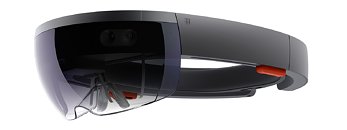Tuesday, May 9th 2017
VESA Forms Working Group Towards XR Standards
The Video Electronics Standards Association (VESA) has recently announced plans to form a special working group within its ecosystem, whose mission will be to develop standards for XR (eXtended Reality) products and development. XR envelops both VR (Virtual Reality) and AR (Augmented Reality), and VESA has apparently had enough of differing vendor implementations. According to VESA, "the lack of standardization is causing compatibility issues between products from different vendors, as well as increasing the complexity and cost of development, ownership and replacement. Lack of compatibility can also create confusion for end users and impede broader acceptance of AR/VR products."
Considering the XR market's value is expected to hit roughly $162 billion dollars by 2020, we can certainly see how "compatibility issues" and "lower acceptance of AR/VR products" could affect what is looking to be an extremely lucrative market. Let's just gloss over the fact (slightly paradoxical, actually) that we're now looking at two different XR standards groups, VESA's newly-announced initiative, and Khrono's OpenXR.However, while OpenXR is focused mainly on software, VESA wants its working group to look beyond the software to bolster hardware compatibility. OpenXR, for one, aims to create a standard API that interfaces with all hardware APIs and takes the extra work out of the equation for developers. It looks like the implementation of a high-level API, in essence - a common programming interface that allows developers to basically "ignore" vendor and device-specifics, potentially trading higher performance for simplicity of programming. VESA, however, will take a distinct approach, with some considerations regarding software, but is mainly preoccupied with hardware compatibility (which is in-line with their work on DisplayPort, Embedded DisplayPort, the Extended Display Identification Data standards as well as the DisplayID extension.
VESA states its missions as such:
Sources:
Tom's Hardware, Business Insider
Considering the XR market's value is expected to hit roughly $162 billion dollars by 2020, we can certainly see how "compatibility issues" and "lower acceptance of AR/VR products" could affect what is looking to be an extremely lucrative market. Let's just gloss over the fact (slightly paradoxical, actually) that we're now looking at two different XR standards groups, VESA's newly-announced initiative, and Khrono's OpenXR.However, while OpenXR is focused mainly on software, VESA wants its working group to look beyond the software to bolster hardware compatibility. OpenXR, for one, aims to create a standard API that interfaces with all hardware APIs and takes the extra work out of the equation for developers. It looks like the implementation of a high-level API, in essence - a common programming interface that allows developers to basically "ignore" vendor and device-specifics, potentially trading higher performance for simplicity of programming. VESA, however, will take a distinct approach, with some considerations regarding software, but is mainly preoccupied with hardware compatibility (which is in-line with their work on DisplayPort, Embedded DisplayPort, the Extended Display Identification Data standards as well as the DisplayID extension.
VESA states its missions as such:
- Establish the hierarchical structure for AR/VR services, including physical connections, data transfer protocols, software drivers and application layers
- Define the basic communication data structure and communication channel between the source and sink devices
- Study the related technologies and algorithms, and standardize them to enable economic and efficient implementation
- Suggest any changes to existing VESA standards that may be needed for better AR/VR support



14 Comments on VESA Forms Working Group Towards XR Standards
this Should have been sorted out ages ago then maybe it would not be a Niche Product in a niche market
Standards (adheared to) go a long way to making products Consumer friendly and enhance product life
Can't really blame them; they've done their best in the past, came up with some pretty good standards. And what happened? Profits got in the way and a certain company did its damnest to make sure they'd never become adopted.
(until recently, when all of a sudden what do you know, there was a point after all! Let's re-introduce them, lol)
Also, they don't think like we do. Maybe they were waiting, see which way the wind blows with what's already out there / lawsuits and so on.
(you seem the only one Ranting)
Jesus Get over the fact you invested in VR and its not taken off like the Publicity promised
if they the manafacture's were not so greedy about the price they charge then maybe it would be mainstream and extremely popular
I like others would like one
but i cannot justify the hard Cash investment in what is for gods sake is STILL PROTOTYPE HARDWARE
I think this is good that VESA is finally getting involved but as @dorsetknob said, too little too late. They should have got involved when Oculus and Valve were getting excited about it.
also this is such a terrible image, ridiculous
Good times.
When does an open standard become... THE standard? And is it ironic FreeSync is a trademark?
Human sacrifice, dogs and cats living together... mass hysteria!
FreeSync is a trademark of AMD. Adaptive sync (which FreeSync is based on) is the standard. NVIDIA can't call their interpretation of adaptive sync "FreeSync." They'll probably call it G-SYNC+ or something, a trade mark they own. A theoretical G-SYNC+ monitor would work with AMD FreeSync capable cards and FreeSync monitors would work with NVIDIA G-SYNC+ cards. AMD really made a mistake by pushing the name "FreeSync." They should have just stuck with "VESA adaptive sync." It's going to create confusion when NVIDIA finally decides to make the move.
I agree, AMD are very much in the wrong here, and I find their open by name but not really open in nature interpretation a liability, great PR of course... not that Nv care when they can still make money, as they should seeing as they invested in the tech first.
G-Sync is tied to Nv, as it should be, and the consensus is it's still "THE standard" when it comes to VRR.